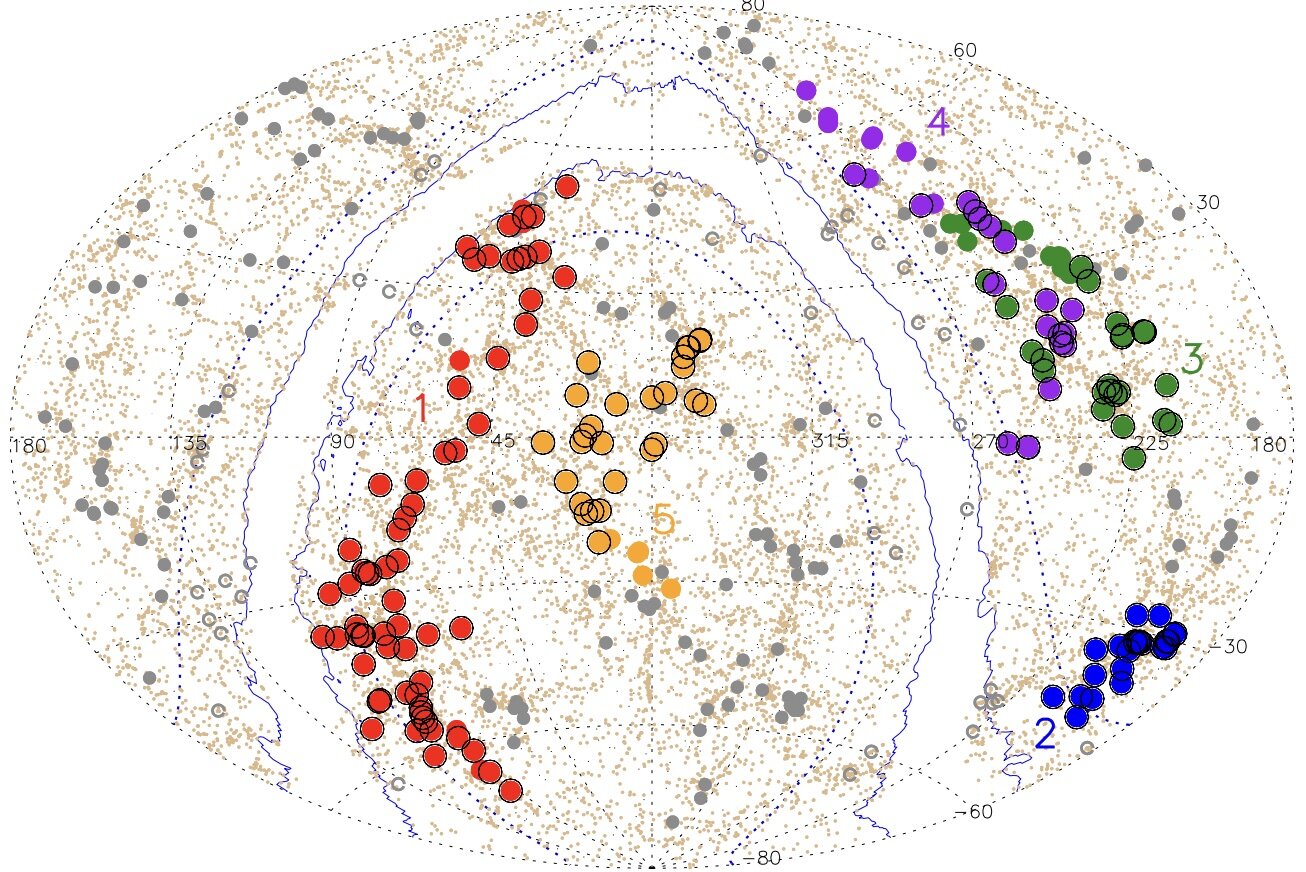Astronomers have discovered what may be the largest-scale structure in the known universe — a group of galaxy clusters and clusters of galaxy clusters that spans roughly 1.3 billion light-years across and contains a mind-boggling 200 quadrillion solar masses.
The newfound structure is dubbed Quipu after an Incan system of counting and storing numbers using knots on cords.
Like a Quipu cord, the structure is complex, made up of one long filament and multiple side filaments. It spans roughly 1.3 billion light-years (more than 13,000 times the length of the Milky Way), potentially making it the largest object in the universe in terms of length, beating out previous record-holders such as the Laniākea supercluster.
The discovery was shared in a new paper posted on the preprint website ArXiv on Jan. 31. (The paper has not yet been published in a peer reviewed journal, but has been accepted by the journal Astronomy and Astrophysics.)
“Quipu is actually a prominent structure readily noticeable by eye in a sky map of clusters in the target redshift range, without the help of a detection method,” the team wrote in the paper.
Related: James Webb Space Telescope smashes its own record to find the earliest galaxies that ever existed
The research is part of a long-running effort to map the matter distribution of the universe at different wavelengths of light. Distant structures in the universe show a shift in their wavelengths toward the red part of the electromagnetic spectrum, a phenomenon known as redshift. While objects with a redshift of up to 0.3 have been well-mapped, the researchers focused the new study on redshifts of 0.3 to 0.6. The greater the redshift, the more distant the objects.
The biggest structures in the universe
The structures reported in the new study were all detected between roughly 425 million and 815 million light-years from Earth. Prior studies suggest that even larger structures exist deeper into the cosmos. The current contender for the largest structure in the universe is the Hercules Corona-Borealis Great Wall, a mysterious concentration of matter located roughly 10 billion light-years from Earth, and spanning an estimated 10 billion light-years across. However, the Great Wall’s existence remains disputed.
Quipu was the largest superstructure the researchers discovered in their datasets, but they also found four more giant structures. The smallest, the Shapley supercluster, was previously known as the largest superstructure ever discovered. It’s now been eclipsed by Quipu, plus three others: The Serpens-Corona Borealis superstructure, the Hercules supercluster, and the Sculptor-Pegasus superstructure, which stretches between the two constellations that give it its name.
Together, these five superstructures contain 45% of the galaxy clusters, 30% of the galaxies and 25% of the matter in the observable universe, the researchers reported in the paper. In total, they make up 13% of the universe’s volume.

Space moves in mysterious ways
The researchers also detected the ways that this matter affects the overall environment in the universe. The superstructures affect the cosmic microwave background (CMB), the microwave radiation left over from the Big Bang that’s found uniformly across space. The researchers also discovered that the local velocity of these streams of galaxies affects measurements of the universe’s overall expansion: Where the superstructures reign, the local expansion of galaxies can distort the measurement of the overall universe’s expansion, known as the Hubble constant. Finally, the gravitational pull of so much matter can cause a bending of light known as gravitational lensing, which could distort images of the distant sky.
Future research could examine how these large-scale structures have affected the evolution of galaxies, the researchers wrote. Though the structures are only temporary — the universe is always expanding, slowly pulling clusters apart — their sheer size makes them important.
“In the future cosmic evolution, these superstructures are bound to break up into several collapsing units,” the researchers wrote. “They are thus transient configurations. But at present they are special physical entities with characteristic properties and special cosmic environments deserving special attention.”
